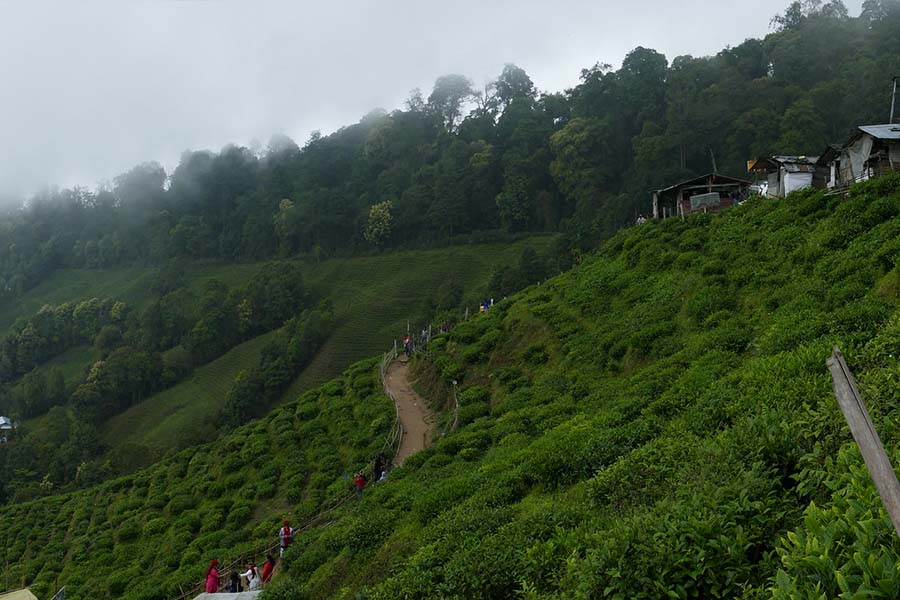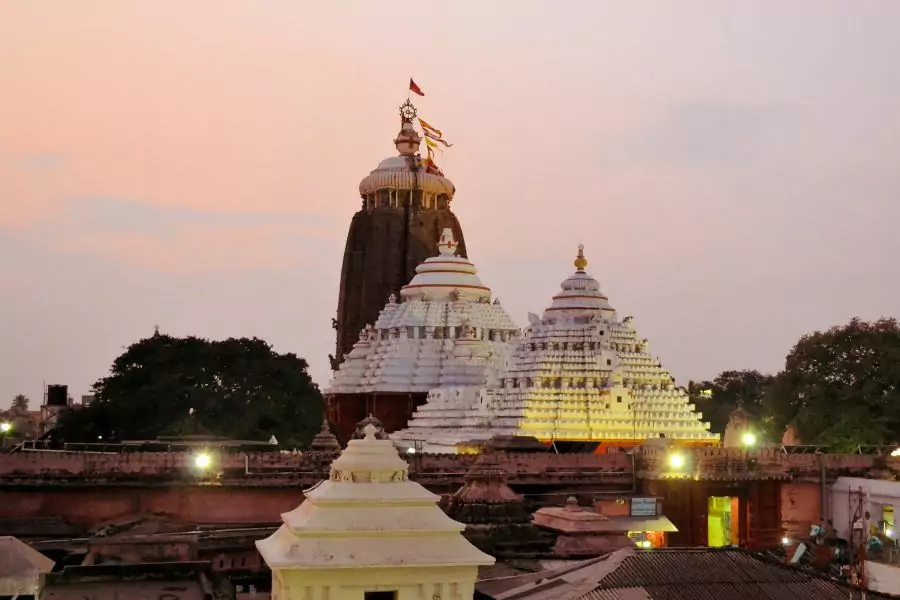City Palace in Jaipur – History, Exploring the City Palace Complex

The City Palace in Jaipur stands as a glorious symbol of Rajasthan’s royal heritage, a majestic blend of Rajasthani and Mughal architecture that tells the story of the Pink City’s regal past. Located in the heart of Jaipur, the City Palace offers visitors a chance to step back in time and experience the grandeur of the Rajput era. With its sprawling courtyards, lush gardens, and exquisite palaces, the City Palace continues to enchant travelers from around the world.
The Historical Background of City Palace
Foundation and Construction
Maharaja Sawai Jai Singh II, the founder of Jaipur, constructed the City Palace in 1727. He intended the palace to serve as his residence and the administrative center, reflecting the power and prestige of the Kachwaha Rajput dynasty. Over the years, the palace complex expanded under subsequent rulers, each adding unique architectural elements.
Architectural Influences
The architecture of the City Palace showcases a magnificent fusion of Rajput, Mughal, and European styles. Intricate carvings, expansive courtyards, and ornate gateways highlight the artistic brilliance of the time. Designers followed the principles of Vastu Shastra, the ancient Indian science of architecture, in creating this iconic structure.
Exploring the City Palace Complex
Mubarak Mahal

Mubarak Mahal, or the “Auspicious Palace,” is one of the most prominent structures within the City Palace complex. Maharaja Madho Singh II built it in the late 19th century, originally using it as a reception hall for foreign dignitaries. Today, Mubarak Mahal houses the Maharaja Sawai Man Singh II Museum, which displays a fascinating collection of royal costumes, textiles, and artifacts.
Chandra Mahal

Chandra Mahal, the most significant and impressive structure within the City Palace, remains the residence of the current Maharaja of Jaipur. This seven-story palace features unique designs on each floor, with beautiful frescoes, mirror work, and floral decorations. The ground floor, open to the public, showcases the royal family’s collection of historical artifacts.
Diwan-i-Khas

The Diwan-i-Khas, or “Hall of Private Audience,” served as the venue where the Maharajas held private meetings with courtiers and foreign ambassadors. The hall dazzles with crystal chandeliers, intricate paintings, and two massive silver urns, recognized as the largest in the world. Maharaja Sawai Madho Singh II used these urns to carry Ganges water during his trip to England.
Diwan-i-Aam

The Diwan-i-Aam, or “Hall of Public Audience,” hosted public meetings and gatherings. The hall features marble columns and an ornate ceiling adorned with gold leaf. Visitors can admire the collection of miniature paintings, ancient manuscripts, and royal memorabilia that decorate the walls.
Pitam Niwas Chowk

Pitam Niwas Chowk is a courtyard within the City Palace that leads to Chandra Mahal. The courtyard is famous for its four intricately designed gates, each representing a different season and dedicated to Hindu gods. The Peacock Gate, adorned with vibrant peacock motifs, remains particularly popular among visitors.
The Palace Gardens
Lush gardens surround the City Palace, offering a peaceful retreat from the bustling city. These gardens, with manicured lawns, fountains, and flowerbeds, reflect the Mughal influence on Rajasthani architecture. The gardens provide stunning views of the palace’s architecture, making them an ideal spot for a leisurely stroll.
Cultural Significance of City Palace
A Hub of Royal Culture
The City Palace has always served as a hub of cultural and artistic activities in Jaipur. The royal family of Jaipur supported the arts, preserving and promoting traditional Rajasthani art forms. The palace complex houses several museums and galleries that showcase Rajasthan’s rich cultural heritage.
Art and Artifacts
The museums within the City Palace complex display an extensive collection of royal artifacts, including weapons, paintings, and manuscripts. The art gallery houses a remarkable collection of miniature paintings that depict scenes from the royal court, mythology, and daily life in Rajasthan.
The Role of City Palace in Modern Jaipur
A Tourist Destination
Today, the City Palace ranks among Jaipur’s most popular tourist attractions. Visitors from around the globe admire its stunning architecture, explore its museums, and learn about the history of Rajasthan’s royal family. The palace plays a vital role in Jaipur’s identity as a cultural and historical center.
Cultural Events and Festivals
The City Palace continues to host cultural events and festivals that celebrate Jaipur’s rich heritage. These events include traditional music and dance performances, art exhibitions, and royal ceremonies. The palace also serves as the venue for the annual Jaipur Heritage Festival, attracting artists and performers from across India.
Preservation and Restoration Efforts
Maintaining the Legacy
The royal family and heritage organizations prioritize preserving the City Palace’s architectural and cultural legacy. Several restoration projects have maintained its grandeur and protected its historical significance. These efforts ensure that future generations can continue to experience the splendor of the City Palace.
Sustainability Initiatives
In recent years, the City Palace has embraced sustainability initiatives to reduce its environmental impact. These initiatives include energy-efficient lighting, water conservation measures, and waste management practices. The palace’s commitment to sustainability reflects its role as a modern cultural institution.
Visiting the City Palace
Best Time to Visit
The best time to visit the City Palace is during the winter months, from October to March, when the weather remains cool and pleasant. This period also coincides with several cultural festivals, making it an ideal time to experience Jaipur’s vibrant traditions.
What to Expect
Visitors to the City Palace embark on a journey through history, exploring the opulent rooms, grand halls, and beautiful gardens that make up this royal complex. Guided tours offer insights into the palace’s history, architecture, and the lives of the royal family. Photography is allowed in most areas, so don’t forget to bring your camera!
Nearby Attractions

The City Palace is located in the heart of Jaipur, close to other iconic landmarks such as the Hawa Mahal, Jantar Mantar, and the Jaipur Bazaar. Visitors can easily explore these attractions in a single day, making for a comprehensive tour of Jaipur’s cultural and historical sites.
Conclusion
The City Palace in Jaipur stands as more than just a historical monument; it represents a living legacy of Rajasthan’s royal heritage. With its stunning architecture, rich history, and vibrant cultural significance, the City Palace offers an unforgettable experience for all who visit. Whether you’re marveling at the intricate designs, exploring the museums, or simply soaking in the atmosphere, the City Palace will transport you to the grandeur of a bygone era.
FAQs
- Who built the City Palace in Jaipur?
- Maharaja Sawai Jai Singh II constructed the City Palace in 1727.
- What are the main attractions of the City Palace?
- Key attractions include Mubarak Mahal, Chandra Mahal, Diwan-i-Khas, Diwan-i-Aam, and Pitam Niwas Chowk.
- Is the City Palace still a royal residence?
- Yes, a portion of the City Palace, specifically Chandra Mahal, remains the residence of the Jaipur royal family.
- What is the best time to visit the City Palace?
- The best time to visit is from October to March during the winter months.
- Are guided tours available at the City Palace?
- Yes, guided tours are available, offering in-depth knowledge about the palace’s history and architecture.


